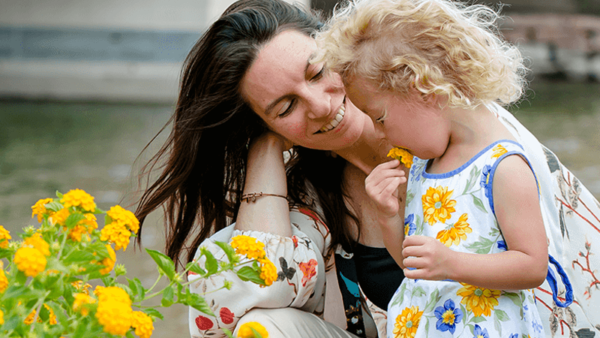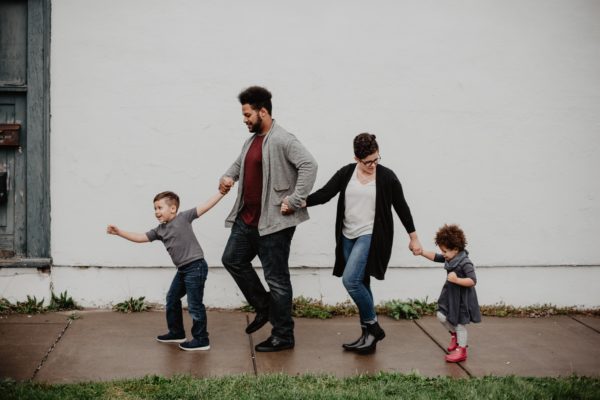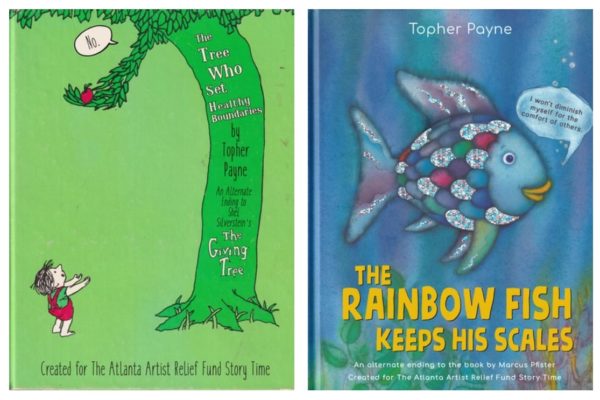Recently this came up with a client, so I wanted to share it with you, too. Our conversation was about a child who crossed other people’s physical boundaries: spanking, picking up smaller children when they didn’t want to be picked up, pulling on people, and the like.
Clear and kind explanations weren’t helping. Stern talk wasn’t helping. So, this parent asked, what would?
Ask for what you want
It’s a paradigm in education that you don’t focus on the negative behavior – instead, you ask for what you’d like to see.
I don’t want to tell a child to never lift another kid, or to never rough house, or even to never playfully spank. I wouldn’t say, “that’s inappropriate,” simply because there are times when it is ok. I don’t want to create shame or label a behavior as bad. That tends to create more problems than it solves.
What I really care about is practicing consent. If everyone is on board with playful spanking, go for it.
Now, for there to be consent, there has to be choice. One person can’t simply make a move. They have to ask.
That was my suggestion to this client. Instead of trying to stop the “problem behavior,” focus on creating the filter. Tell the child they have to ask. Over and over again.
The DON’T Trap
Are there times when you tell your child, “Don’t ____”? If it’s truly a 100% of the time DON’T, like, “Don’t ride your bike without a helmet,” then I’m all for it. But, if it’s most or some of the time, try “You have to ask” instead.
My daughter likes to jump on me, her full weight hurtling my way. I switched from “Don’t jump on me” and “Mama doesn’t like that” to “You have to ask.” Know what happened? She started asking! And when she asks, I find that sometimes I say yes. Win-win.
When your child asks, you get to let them know if you want that kind of play or touch, if the context is right for it.
Here’s a partial list of Don’ts which can be replaced with “You have to ask”:
- Don’t spank your friend’s butt
- Don’t tickle
- Don’t take your friend’s toy
- Don’t take your shirt off
- Don’t jump on me
- Don’t go off on your own
- Don’t throw the ball so hard
Why am I making such a big deal of this? Because with a whole lot of Don’ts, we cobble together a functional reality eventually, but it can lack a deeper understanding of broad themes, and it fails to build consent skills.
Building Consent Skills
“You have to ask” takes it deeper. There are the behaviors which go unchallenged (ok all the time), the have-to-ask behaviors (ok some of the time), and the Don’ts (never ok). Not only do we create three clear categories, we make them practice skills. They practice anticipating and filtering. They practice checking in before proceeding.
This is a relatively small and painless shift on our part as parents and teachers – way easier than creating a system of consequences! Give it a try and let me know how it goes.
In support of you,
Anya
P.S. There’s a ton more in our video library. Become a member and get access to 80+ videos on teaching healthy boundaries, consent skills, preventing sexual abuse, talking about porn…you name it! Plus the membership perks. Check it out!









6 Comments. Leave new
This reminds me of my child’s preschool’s approach to guns. If one child wanted to shoot another one, the shooter would have to ask. So as you walked across the yard, a child might call out, “Elisabeth, can I shought you?!” And as with you and being jumped on, some days I was willing to die a dramatic death and other days I would say not today.
I love that! 🙂
Hi,
I do agree with your perspective, but I am wondering what do you do when one child does ask the other child if he/she can touch her butt/genitals and the child says yes and does give permission? Not in a sinister context but because they think it’s funny. Thank you
Hi Donna, great question! This is commonly referred to as “doctor play,” and different societies have different attitudes towards this. The Dutch, for example, explain some rules and then let the kids explore each other’s bodies. I’m in the US, where there’s a lot of concern about child sexual abuse and the norm is to keep private parts private. That’s my recommendation: to give a rule about private parts (the parts covered by a swimsuit) and remind them of the rule when it gets broken. Because I don’t want to normalize genital play – it’s too slippery of a slope. More on that here: https://www.talkingaboutsex.com/child-playing-doctor/ Does that help?
Love this Anya!
Thank you for the clarity here! I absolutely love this positive way of relating to others and educating my child. Sometimes it is okay for my son to jump on me, too, but not when he doesn’t first search for consent. Makes sense.